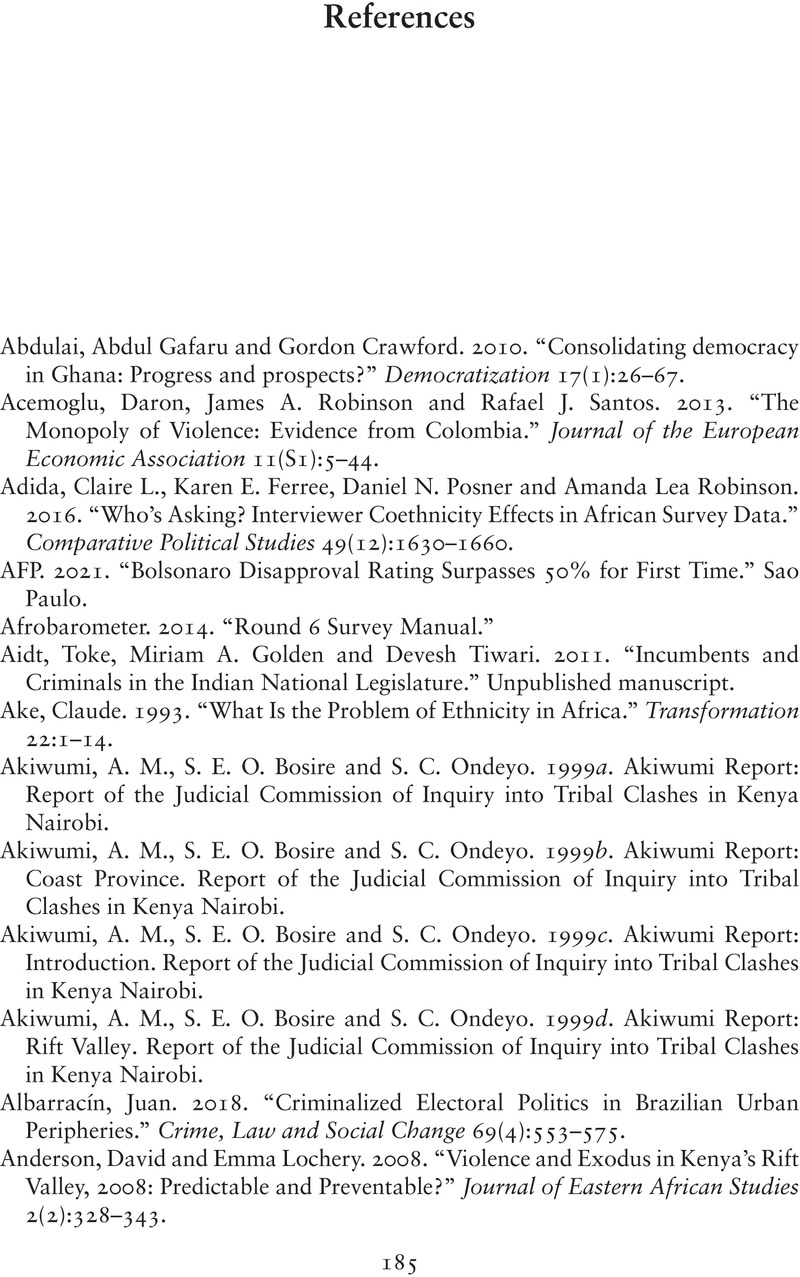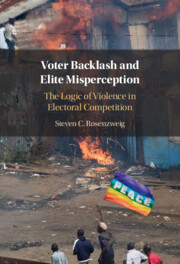Book contents
- Frontmatter
- Dedication
- Contents
- Figures
- Tables
- Preface
- Acknowledgements
- 1 Introduction
- 2 Election-Related Violence in Kenya and around the World
- 3 Theorizing Election-Related Violence: Toward a Theory of Elite Misperception
- 4 Violence and Election Outcomes
- 5 How Violence Affects Voting: Coercion, Persuasion, and Backlash
- 6 Elite Misperception and Election-Related Violence
- 7 Voter Backlash, Elite Misperception, and Violence beyond Kenya
- 8 Conclusion
- Appendix A Sampling Strategy for the Survey in Nakuru, Kisumu, and Narok
- Appendix B Supplementary Analyses
- Appendix C Candidate Vignettes and Outcome Questions
- Appendix D Politician Information Experiment Memo and Contact Scripts
- References
- Index
- References
References
Published online by Cambridge University Press: 18 May 2023
- Frontmatter
- Dedication
- Contents
- Figures
- Tables
- Preface
- Acknowledgements
- 1 Introduction
- 2 Election-Related Violence in Kenya and around the World
- 3 Theorizing Election-Related Violence: Toward a Theory of Elite Misperception
- 4 Violence and Election Outcomes
- 5 How Violence Affects Voting: Coercion, Persuasion, and Backlash
- 6 Elite Misperception and Election-Related Violence
- 7 Voter Backlash, Elite Misperception, and Violence beyond Kenya
- 8 Conclusion
- Appendix A Sampling Strategy for the Survey in Nakuru, Kisumu, and Narok
- Appendix B Supplementary Analyses
- Appendix C Candidate Vignettes and Outcome Questions
- Appendix D Politician Information Experiment Memo and Contact Scripts
- References
- Index
- References
Summary

- Type
- Chapter
- Information
- Voter Backlash and Elite MisperceptionThe Logic of Violence in Electoral Competition, pp. 185 - 198Publisher: Cambridge University PressPrint publication year: 2023



